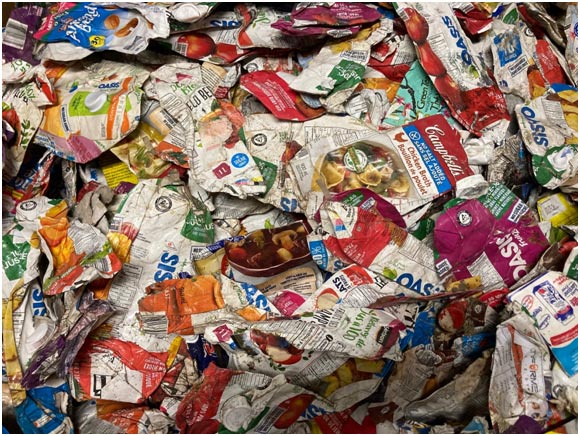What do we mean by eco-friendly packaging? There is no simple answer to this question.
Whether it be as a researcher, a business owner, or a consumer, one must develop a critical mindset and question and analyze all the pros and cons of the different products and technologies that exist on the market.
It’s easy to get lost in this massive quantity of types of packaging and many factors are to blame for creating this confusion. The most important ones include how difficult it is to navigate the sea of information surrounding all the regulations of the packaging industry, to understand the variances that exist from one waste management site to the next according to their capacities in treating different types of waste, and to detect business marketing efforts that sometimes mislead or associate ecological virtues that never come into being.
Just take the term ‘bio-sourced product’. Is it the same as saying it’s ‘good’ for the environment? Not necessarily! Even if bio-sourced products can replace some of the products derived from fossil fuels, we must first analyze the product’s entire life cycle before reaching such a conclusion. For example, some bio-sourced plastics can only be composted using suitable infrastructure (not in a home composting device), while it’s impossible to compost others that must be recycled instead. In addition, certain bioplastics are biodegradable, but microplastics invisible to the human eye are produced during the bio-fragmentation process. These microplastics are just as harmful to the environment.
From an environmental standpoint, cellulosic packaging can seem attractive. However, we must keep a critical mindset and ask ourselves a few important questions: “In which country was the packaging produced?”, “Does this country respect strict environmental standards?”, “Have chemical products been added for the benefit of obtaining specific properties?”, “Were the cellulosic fibres obtained from sustainable sources?”.
Key questions to ask ourselves when developing or choosing an eco-friendly packaging.
Before choosing a type of packaging, we must ask ourselves a few questions to clearly identify the best solution. The first should always be: “Does the product absolutely require packaging?”. If so, the next question will be: “Can the packaging be reused or returned to the store?”. If the answer to this question is no, we must determine which properties are essential for this packaging; for example, must it be impact resistant or grease resistant?
Once these questions are answered, further reflection is needed concerning the steps involved in producing an eco-friendly packaging, which are as follows:
1. Select the raw material: Recommend renewable raw materials, such as plant fibres (wood, cotton, farm residues, etc.).
2. Examine the product’s end of life: Use materials that can be easily reused or recycled. If this is impossible, prioritize compostable materials. Choose materials that can be composted in home composting devices instead of industrial composters seeing as several municipalities don’t have the required equipment. For example, PLA bioplastics, which are made from renewable resources such as plants, will often end up in landfills and will have a greater ecological impact even though they are compostable. In addition, seeing as most sorting facilities don’t have the capacity to sort these, they could contaminate other recyclable materials. More and more municipal regulations are taking the lead over federal regulations by imposing strict measures in terms of types of packaging. Manufacturers should make sure their products respect standards and that they can be appropriately processed by residential waste collection services.
3. Ban the use of harmful chemical products: Some additives must sometimes be used to obtain desired properties. Choose additives that won’t be harmful to the environment or that won’t penetrate inside food and cause health problems; for example, certain chemical substances can act as endocrine disruptors.
4. Optimize the packaging’s design: Aim for a minimalist packaging design. This will most often be the best solution and the least expensive. For example, reducing the amount of ink used or avoiding multiple types of materials used will increase the recycling potential of the product and reduce its environmental impact.
 The complexity of a product’s valorization increases greatly when the several-layered packaging is composed of multiple types of materials.
The complexity of a product’s valorization increases greatly when the several-layered packaging is composed of multiple types of materials.
There exist several organizations specialized in this field that can assist businesses in the development and conception of their packaging. In collaboration with Éco Entreprises Québec (EEQ), Innofibre is working on eco-designs for thermoformed cellulosic pulp packaging for a circular economy. These applied research works are part of its Industrial Research Chairs for Colleges (IRCC) from NSERC.
How to know the environmental impact of a type of packaging?
There exist several methods to quantify the environmental impact of different types of packaging, and some organizations, such as the International Reference Center for Life Cycle Assessment and Sustainable Transition (CIRAIG), can provide answers. The most frequently used tools are:
1. Life Cycle Assessment (LCA): This approach evaluates the potential environmental impact of all the stages involved in the life cycle of a product or service, from the initial extraction process of raw materials all the way to the last stage of its elimination as waste. LCA takes into consideration greenhouse gas emissions, water and energy consumption, air pollutant emissions, and potential negative effects on biodiversity.
2. Environmental Impact Assessment (EIA) : This approach evaluates the environmental impacts of a product or service on a set of criteria such as greenhouse gas emissions, water and energy consumption, air pollutant emissions, and potential negative effects on biodiversity.
3. Sustainability Assessment: This approach evaluates the environmental sustainability of a product or service on a set of criteria such as the use of natural resources, waste management, and pollution.
4. Risk Assessment of Chemical Substances: This approach evaluates the health and environmental risks related to the presence of chemical substances in a product or service.
It’s important to note that each of these assessments has their limits and it’s often better to use several approaches to obtain a global vision of the environmental impacts that a type of packaging can have. The results will in part be linked to the limits that define the analysis, and this could, in some specific cases, lead to a false assumption about the product. Therefore, when we examine the results of one of these assessments, the first questions we must ask ourselves are: “What was its limits?”, or “Does this analysis consider all the stages involved in the product’s life cycle, from the extraction of raw materials all the way to the end of its life?”.
In addition to the tools presented in this text, there exist solutions to promote the development of new eco-friendly alternatives in the field of single-use cellulosic packaging. There is a need for developing more local businesses that can produce this type of packaging and for ensuring a sustainable supply of cellulosic fibres. There is also a need to develop higher performing recycling infrastructure, combined with stricter regulations regarding the types of packaging found on the market. Finally, we must continually inform the population to entice citizens into making better eco-friendly decisions.
Innofibre Mission
"Contribute to the technological positioning and sustainable development of the paper and biorefining industry, by supporting the innovation and diversification of products derived from biomass and by adapting papermaking technologies."
 Benoit Bideau
Benoit Bideau
Researcher at Innofibre














